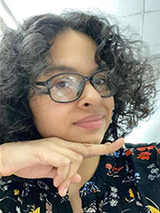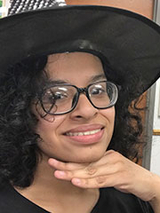Growing up with spina bifida: Valerie’s story
Growing up with spina bifida: Valerie’s story
Valerie is a bright 20-year-old college student studying video game design. She is also a patient of CHOP’s Spina Bifida Program.

Valerie’s spina bifida journey began while she was still in the womb, and the condition has affected her physically for her entire life. When she was born, she had club foot and issues with her right hip, and she was partially paralyzed below the waist. She had surgery to correct the club foot very early in life, but the issues with her right hip and her paralysis have been persistent.
She’s had a lift on her right shoe and a limp on that side when she walked for as long as she can recall. As a young child, it didn’t really hinder her; she would run and play unimpeded. But by fifth grade, the condition had progressed to hip dysplasia that required surgery.
Finding her passion
After hip surgery, Valerie had to wear a cast that covered her right leg and her entire waist up to her belly button. Unable to move much for nearly two months, she turned to video games for entertainment, and a passion was born.
“It made me happy to play them, and I want to make other people happy,” says Valerie, of her interest in doing 3-D modeling for video games. She likes to travel and be independent, and loves cold weather, all of which influenced her decision to go to college in Michigan. She’s now in her junior year and can’t wait to graduate and begin her career.
Valerie wears braces on her legs and uses crutches to get around. She attends the Spina Bifida Program Clinic once a year, where she sees a team that has known her since she was young. At the clinic, she also sees orthopedics and a urologist.
Growing up with spina bifida

Reflecting on growing up with spina bifida, Valerie says it was tough at times. But she also knows it shaped her into the person she is today: creative and independent.
Valerie has always had more serious responsibilities than her peers. Since high school she’s done self-catheterization and has been responsible for checking her lower body for skin breakdowns due to her paralysis. It hasn’t always been easy, but she’s faced every challenge head on.
“My mom didn’t baby me,” says Valerie. “She would say, ‘You can do this, do it yourself.’ She taught me how to be independent.”
When offering advice to younger kids with spina bifida, she suggests:
- Start early with independence. The sooner you get used to doing things yourself, the sooner you can master them.
- Take care of yourself. Do your own research, make sure you know what you’re doing and always ask your doctor for help if you need it.
Valerie urges parents reading this to encourage their child to be independent.
“Don’t baby them or try to wrap them in a bubble,” she says. “Try to imagine them as any other child and they will thrive in their own way.”